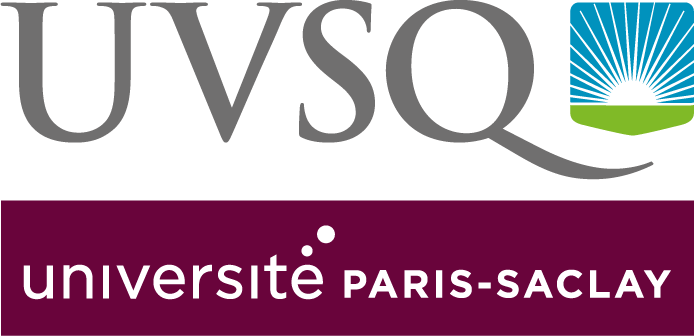Vous êtes ici : UVSQ RechercheDoctorat
- Partager cette page :
- Version PDF
«Modélisation du rayonnement proche infrarouge émis par la haute atmosphère : étude théorique et observationnelle» par Christophe BELLISARIO
Discipline : METEOROLOGIE, OCEANOGRAPHIE PHYSIQUE DE L'ENVIRONNEMNT, Laboratoire : LATMOS - Laboratoire Atmosphères, milieux, observations Spatiales
Résumé :
Le rayonnement atmosphérique appelé nightglow est un phénomène se produisant à haute altitude (environ 90 km). Il consiste en l’émission d’un rayonnement suite à la désexcitation de certaines molécules et atomes (OH, Na, O2 et O). Il se répartit sur une large gamme spectrale, en particulier dans l’infrarouge et se propage jusqu’au niveau du sol. Le rayonnement nightglow constitue un marqueur important pour la haute atmosphère, permettant de remonter à la température, mais également à de nombreux phénomènes dynamiques comme les marées atmosphériques ou les ondes de gravité. Sa propagation au niveau du sol permet l’éclairage de scène terrestre et ainsi la vision nocturne à l’aide de caméras proche infrarouge. Afin de mieux connaître les fluctuations de ces émissions en fonction du temps à différentes échelles et en différents lieux sur la planète, la thèse s’est axée sur une étude observationnelle et une étude théorique. L’étude observationnelle a produit une climatologie à grande échelle par l’extraction du rayonnement issu des données de l’instrument GOMOS. Les campagnes de mesures réalisées au sol ont quant à elles mis en avant certains aspects dynamiques importants comme les marées et les ondes de gravité. Pour reproduire le rayonnement nightglow, il a été nécessaire de modéliser les réactions chimiques des nombreuses espèces présentes à haute altitude, le chauffage, la photodissociation de certaines molécules par le rayonnement solaire et la propagation du rayonnement vers le sol. Certains processus dynamiques ont été inclus comme la diffusion moléculaire, la diffusion turbulente et une paramétrisation des marées. Enfin, les résultats du modèle sont comparés aux observations satellitaires ainsi qu’au niveau du sol et des tests de sensibilité sont effectués pour estimer la réponse du rayonnement aux différents modules du modèle.
Abstract :
The nightglow is an atmospheric radiation which occurs at high altitude (around 90 km). It comes from the desexcitation of specific molecules and atoms (OH, Na, O2 and O). It spreads over a wide spectral band, especially in the infrared and propagates to the ground level. The nightglow emission is an important mark for the high atmosphere, as it allows the retrieval of the temperature and many dynamic processes such as atmospheric tides or gravity waves. Its propagation to the ground level allows the illumination of terrestrial scene and therefore the night vision with the use of near infrared cameras. In order to have a better knowledge of the emission fluctuations as a function of time for various scales and at various locations, the work is focused on an observational and theoretical study. The observational study produced large scale climatology with the extraction of nightglow emission from GOMOS data. On the other hand, ground measurements highlighted some dynamical aspects such as tides and gravity waves. To model the nightglow emission, it has been necessary to take into account the chemical reactions of the species available at high altitude, the heating, the photodissociation process and the propagation of the emission to the ground. Selected dynamical processes have been included, such as the molecular and turbulent diffusion, and a tide parameterization. Finally, the results of the model are compared to the satellite and ground observations and sensitivity tests are run to estimate the response of the emission to the various modules of the model.
Le rayonnement atmosphérique appelé nightglow est un phénomène se produisant à haute altitude (environ 90 km). Il consiste en l’émission d’un rayonnement suite à la désexcitation de certaines molécules et atomes (OH, Na, O2 et O). Il se répartit sur une large gamme spectrale, en particulier dans l’infrarouge et se propage jusqu’au niveau du sol. Le rayonnement nightglow constitue un marqueur important pour la haute atmosphère, permettant de remonter à la température, mais également à de nombreux phénomènes dynamiques comme les marées atmosphériques ou les ondes de gravité. Sa propagation au niveau du sol permet l’éclairage de scène terrestre et ainsi la vision nocturne à l’aide de caméras proche infrarouge. Afin de mieux connaître les fluctuations de ces émissions en fonction du temps à différentes échelles et en différents lieux sur la planète, la thèse s’est axée sur une étude observationnelle et une étude théorique. L’étude observationnelle a produit une climatologie à grande échelle par l’extraction du rayonnement issu des données de l’instrument GOMOS. Les campagnes de mesures réalisées au sol ont quant à elles mis en avant certains aspects dynamiques importants comme les marées et les ondes de gravité. Pour reproduire le rayonnement nightglow, il a été nécessaire de modéliser les réactions chimiques des nombreuses espèces présentes à haute altitude, le chauffage, la photodissociation de certaines molécules par le rayonnement solaire et la propagation du rayonnement vers le sol. Certains processus dynamiques ont été inclus comme la diffusion moléculaire, la diffusion turbulente et une paramétrisation des marées. Enfin, les résultats du modèle sont comparés aux observations satellitaires ainsi qu’au niveau du sol et des tests de sensibilité sont effectués pour estimer la réponse du rayonnement aux différents modules du modèle.
Abstract :
The nightglow is an atmospheric radiation which occurs at high altitude (around 90 km). It comes from the desexcitation of specific molecules and atoms (OH, Na, O2 and O). It spreads over a wide spectral band, especially in the infrared and propagates to the ground level. The nightglow emission is an important mark for the high atmosphere, as it allows the retrieval of the temperature and many dynamic processes such as atmospheric tides or gravity waves. Its propagation to the ground level allows the illumination of terrestrial scene and therefore the night vision with the use of near infrared cameras. In order to have a better knowledge of the emission fluctuations as a function of time for various scales and at various locations, the work is focused on an observational and theoretical study. The observational study produced large scale climatology with the extraction of nightglow emission from GOMOS data. On the other hand, ground measurements highlighted some dynamical aspects such as tides and gravity waves. To model the nightglow emission, it has been necessary to take into account the chemical reactions of the species available at high altitude, the heating, the photodissociation process and the propagation of the emission to the ground. Selected dynamical processes have been included, such as the molecular and turbulent diffusion, and a tide parameterization. Finally, the results of the model are compared to the satellite and ground observations and sensitivity tests are run to estimate the response of the emission to the various modules of the model.










 Etudiants
Etudiants